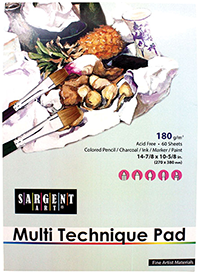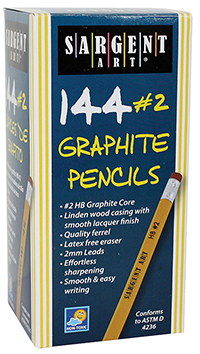Background:
Folk art occurs in every culture. It is art that is created by artists who have no formal art training. It is generally made by hand and is often designed to be functional. Mexican mirrors incorporating embossed tin frames and bright colored frames have been functional art since the 1500’s. Mexican hojalata (tin art work) is created by stamping, punching and cutting tin shapes. Tin has been a metal of choice because it is inexpensive and easy to emboss.
National Art Content Standards:
Create VA: Cr2.1.7a Demonstrate persistence in developing skills with various materials, methods and approaches in creating works of art or design.
Create VA:Cr3.1.7a Reflect on and explain important information about personal art work in an artist statement.
Respond VA: Re7.2.7a Analyze multiple ways that images influence specific audiences.
Learning Objectives/Goals/Essential Understandings
Students will learn about Mexican folk art and metal mirror techniques. They will recognize folk art and understand its’ importance to cultures of the world. Students will be will be introduced to artists Frieda Kahlo and Josefiina Aguilar. Students will design personal mirrors that are inspired by Mexican art. They will learn embossing techniques and incorporate symbols from their own cultures into the mirror frames. Students will apply previously learned design skills and incorporate the principles of art. Understanding of functional art is essential to this lesson. Upon completion, students may embellish their mirrors with decorative elements. Students will constructively critique their mirrors in small groups and complete a written statement reflecting their understanding of folk art and functional art.
Vocabulary (Language Demands)
mixed-media — using a variety of media to create a work of art
principles of art – balance (symmetrical, asymmetrical, radial), contrast,
emphasis, movement, pattern, rhythm, unity/variety
embossing – creating a raised (relief) surface on metal
radial design – a design that is organized around a central point
folk art – art that is created by artists with no formal art training
functional art – art that is both beautiful and useful
hojalata – tin art work
Materials:
(Sargent Art Products are noted with product numbers below)

#23-5034 Multi-technique drawing pad

#22-7244 Graphite pencils

#22-1566 Permanent markers

#22-1527 Classic markers

#22-1501 Glitter gel pens

#22-7292 Constuction paper colored pencils

#22-1506 Liquid metal markers

#22-1494 Bullet fine line marker

#35-1436 Craft sticks

#22-0914 Scissors

#22-1305 Tacky glue
heavy duty foil, 10” and 5” circle templates, ruler or straight edge, 3” circle mirror
Time:
4 lessons, 50 minutes each
Lesson Introduction and Motivation:
Teacher introduces students to Mexican folk art and Mexican mirrors. Teacher gives a brief history of the embossed metal process and introduces students to artists Frieda Kahlo, Diego Rivera and Josefina Aguilar. Students view several artworks by these artists and discuss how their culture is revealed in their art. Students work in small groups and write their responses to the following questions: Why do the traditions of folk art remain important to world art? How does art influence its viewers? Why did/do Mexican artists use tin (hojalata) in their mirrors?
Procedure:
Lesson 1
Teacher introduces new vocabulary and clarifies definitions with students. Students are encouraged to use these art terms as they progress with the lesson. Teacher presents Mexican mirror examples, including teacher sample. Teacher explains radial design and reviews the principles of art. Small group activity includes students’ responses to the questions in the above introduction. Students receive white drawing paper and circle templates. Teacher demonstrates evenly tracing the 5” circle within the 10” circle. The formative assessment for Lesson 1 is an exit slip asking students to match new vocabulary with definitions.

Lesson 1 5” circle is traced within the 10” circle to define the mirror border
Lesson 2
Teacher and students prepare a summative assessment rubric for the lesson. Students review the principles of art and radial design. They again view several Mexican mirrors for inspiration in their personal mirror frame designs. Teacher demonstrates dividing the frame into sections for accurate radial design. Students receive sketch templates and work on their frame designs. Non-circle templates are available for students preferring a non-circular frame. Students add color to their sketches using colored pencils.
The formative assessment for Lesson 2 is a short written reflection showing understanding of balance, variety of shape and pattern in a radial design


Lesson 2 Use a straight edge ort ruler to divide the frame area into sections and draw a radial design with pencil.
Lesson 3
Teacher demonstrates application of color using a variety of drawing media, including colored pencils, markers, liquid metal markers, glitter gel pens and fine line markers. Students are given time to practice with these materials before choosing their coloring materials for their frame designs. Assessment for Lesson 3 is a partner activity. Students critique their frame designs and offer positive suggestions for completing the frames.

Lesson 3 Students add color to their frames.
Lesson 4
Teacher creates an exhibit of the students’ frames in progress. Frames are displayed while teacher reviews the embossing process and demonstrates embossing on heavy foil.
A bold and simple design is recommended. Students use pencils and craft sticks to emboss a design around their foil circles. Foil is placed on a pad of paper to ensure embossing. Marker may be used to add color to the foil design. Students use studio time to emboss their foil and complete coloring their frames.


Lesson 4 Foil is embossed with pencil and craft stick
The frames are cut from the drawing paper after the frame is completed. Teacher demonstrates attaching the foil to the frame with tacky glue and students proceed with this process. A small mirror is glued to the center of the foil to complete the mirror and make it functional. Mirror frames may be embellished with decorative rhinestones, appliques, beads and/or stickers. The summative assessment after Lesson 4 is students’ written reflection about the learning segment. They address the following questions: What have I learned about Mexican art and Mexican folk art mirrors? In my opinion is my mirror successful? Why or why not? What will I do differently the next time I create a Mexican mirror? Did I use a variety of drawing media to complete my mirror? Students complete the summative rubric prepared in Lesson

Lesson 4 Embossed foil and mirror are glued to the frame. Desired embellishments are added.
Summative Assessment:
Level Three (Target)
The Mexican inspired mirror is completed and embellished. The artwork is original. It conveys excellent understanding of radial design and it incorporates all of the principles of art. Craftsmanship is excellent. Student handled materials with skill and confidence.
The completed mirror shows a high degree of hard work and effort to achieve desired visual effects. Cooperation and respect for materials during the lessons were excellent. Student completed formative assessments and summative assessment for the learning segment with thoughtful and insightful comments.
Level Two (Satisfactory) –
The Mexican mirror is completed. The artwork is original and it conveys a general understanding of radial design. Some of the principles of art are incorporated. Craftsmanship is good. Student handled materials with confidence. The completed mirror shows hard work and effort to achieve the objectives of the lesson. Cooperation and respect for materials during the lessons were good. Student completed the formative assessments and the summative assessment for the learning segment.
Level One (Developing)
The Mexican mirror was not completed. The artwork was not original and it does not show understanding of radial design. Little thought was given to incorporating the principles of art. Craftsmanship was careless. Hard work and effort were not obvious. Cooperation and respect for materials were poor. Student completed some of the formative assessments and part of the summative assessment.
Extension Activity:
Students may refer to the art of Frieda Kahlo and Josefina Aguilar to create a large embossed design using heavy foil and embossing tools. Color is applied to the embossed foil with permanent marker and liquid metal markers.
Resources/References:
Frieda Kahlo, Frank Milner, 2002, PRC Publishing, Ltd.
Josefina, Jeanette Winter, 1996, Harcourt, Brace and Company
http://www.directfrommexico.com/mexican-folk-art.html
(Mexican folk art and décor)
http://www.craftstylish.com/item/4976/how-to-emboss-a-metal-tin/page/all
(how to emboss tin metal)
http://www.mexican-folk-art-guide.com/mexican-folk-art.html
WvuGzS_Mzq0
Mexican folk art guide




